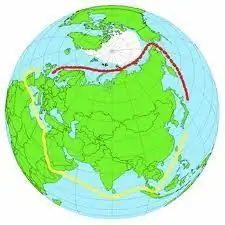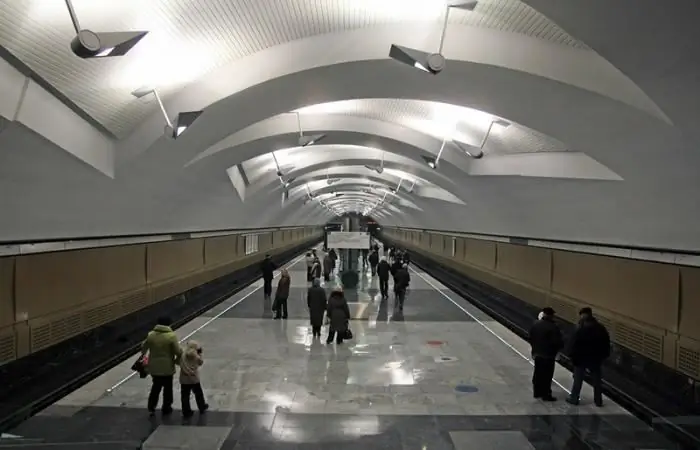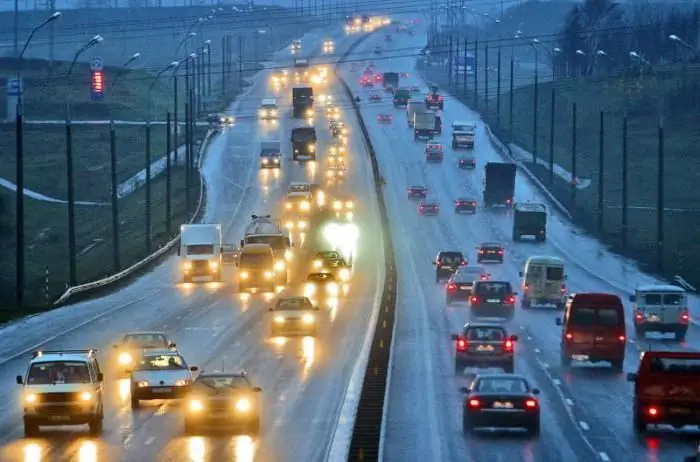2025 Author: Howard Calhoun | [email protected]. Last modified: 2025-01-24 13:10:26
The last two decades of China's booming economic recovery have turned it into a superpower. With the coming to power of a new leadership led by Xi Jinping, the PRC has ceased to hide its foreign policy ambitions. The project to create a New Silk Road is a logical continuation of China's policy in recent years. The first steps to make the dream come true have already been taken: financial resources have been allocated, agreements have been worked out with key countries. The plan also has several opponents from among the major world powers. By implementing the project, the PRC will solve not only a number of internal problems, but also globally affect the economic picture of the world. How will the New Silk Road go?
A grand plan
Not so long ago, Foreign Minister Wang Yi defined the concept for China's foreign policy "One Belt - One Dream", according to which it is planned to build a New Silk Road from Asia to Europe. In early 2014, Chinese leader Xi Jinping presented a plan to create a Silk Road. As part of the project, it is planned to form a giant single economic belt, consisting of infrastructure facilities in many countries. The new Silk Road will run along the CentralAsia, Russia, Belarus, Europe. The sea route will follow the Persian Gulf, the Mediterranean Sea and the Indian Ocean. An option with routes through African countries is being considered.

China is going to invest in the project more than $40 billion from a special fund. $50 billion has already been allocated by the Asian Bank. The funds will be directed to the construction of railways, ports and other facilities, to the development of relations between the countries participating in the project. Wantchinatimes estimated China's total investment at $22 trillion.
Europe and the US have already made attempts to revive the Silk Road. China turned to this idea last but did much more to implement it. Thanks to impressive financial opportunities and “soft economic aggression”, it will be possible to form a safe transit that will be used by many states. Today, China is actively discussing infrastructure construction projects with participating countries. A more specific scheme of the new Silk Road and the results of lengthy negotiations will become known in late March at the Boao Forum (South China's Hainan Province).
Silk Road Concept
Today, China supplies machine tools, equipment, electrical and high-tech products to the world market. In terms of the length of high-speed highways (16 thousand km), the country ranks first in the world. The ancient Silk Road was exclusively a Chinese transport corridor. Today, China announces the creation of an international economicvenues.

The initiative to unite the "Economic Belt" and the "Maritime Silk Road of the 21st century" is carried out within the framework of the "One Belt - One Road" program. The concept of the New Silk Road is to implement the plan through five interrelated elements:
- single infrastructure;
- political coherence;
- currency and financial flows;
- trade links;
- humanitarian communication.
Full-scale cooperation is being promoted on this basis, strengthening mutual trust between countries, developing economic integration and cultural tolerance. The implementation of the project as a whole was planned along three routes:
- "China - Central Asia - Russia - Europe".
- "China - Central and West Asia".
- "China - Southeast Asia - South Asia".
New Silk Road. Route
The scale of the project is impressive not only in terms of investment, but also in terms of geography. The entire "path" is divided into two routes (by land and by sea). The land route starts in Xi'an (Shaanxi province), passes through the whole of China, goes to Urumqi, crosses such countries of Central Asia as Iran, Iraq, Syria, Turkey. Further through the Bosphorus it follows to Eastern Europe, to Russia. The new Silk Road, the route of which will pass through the territory of several European countries, will run from Rotterdam to Italy.
A no less grandiose sea route begins in the city of Quanzhou (Fuzqian Province), followsthrough the major southern Chinese cities, through the Malacca Strait, entering Kuala Lumpur. Crossing the Indian Ocean, stops in Calcutta (India), Colombo (Sri Lanka), in the Maldives, reaches Nairobi (Kenya). Further, the route passes along the Red Sea through Djibouti, through the Suez Canal it goes to Athens (Greece), to Venice (Italy) and merges with the land Silk Road.

Economic tasks of the "path"
As the largest exporter, China influences the world economy in many ways. According to forecasts, the Silk Road is expected to trade $21 trillion a year, which could increase China's share in world GDP to 50%.
It is assumed that the New Silk Road, the construction of which is already in full swing, will redirect the flow of exports of goods and capital to regions that until recently remained outside of international trade. In recent decades, China has been actively cooperating with Asian countries. Investments provided by Chinese state-owned companies are perhaps the only way for many developing countries to maintain independence among the great powers.
From an economic point of view, the benefit of the project for China lies in the reduction of logistics costs. For the countries participating in the Silk Road - in raising additional funds. An example of such cooperation based on Chinese investment is the iHavan project in the Maldives (in the future, this will be one of the important points on the map of the maritime Silk Road).

Regional tasks
China's presence in Central Asia and Africa is not purely economic. At the regional level, the priority task for the PRC remains the political and economic stability of the border regions: East, Central and Southeast Asia. The main barrier to the spread of the Chinese economic phenomenon has become the factor of the “Chinese threat”. It is planned to reduce the threat to "no" with the help of the strategy of "soft power", strengthening the cultural influence of the PRC. The number of Asian students enrolled in Chinese universities reflects the degree of penetration of Chinese culture.
The energy security of the Celestial Empire largely depends on its control over the sea and land Silk Road. As the world's largest energy importer, China is 100% dependent on maritime supplies. The threat of an “oil embargo” constantly hangs over the country. The US used this tactic against Japan before the war.
The New Silk Road will unite many countries, including US opponents (Russia, Pakistan, Iran). The states participating in the path can become a powerful political force. An important task associated with the creation of the Silk Road is the protection of Chinese investments. Through trade points controlled by the PRC, it is possible to implement not only commercial, but also anti-terrorist goals. From time to time, information appears in the media about negotiations on the creation of a Chinese network of military bases "Pearl String" in the Indian Ocean.

The impact of the project on the domestic policy of China
Largeinternational projects are becoming a paramount task in China's domestic policy as well. The new Silk Road will contribute to the resolution of several internal problems.
- Pro-China Economic Belt is a profitable investment project with high payback and long-term profitability.
- Passing through Western China, the belt will contribute to solving the problems of uneven development of the country, cultural and economic integration of the western regions.
- Construction of infrastructure facilities is a source of new jobs for Chinese state-owned companies, which have solid human resources.
Central Asia and Russia
The territories of Russia and Central Asia, uniting the West and the East, are significant transit arteries for China. Today, China is the world's factory. They have been considering the idea of using Central Asia for the benefit of the economy since the collapse of the Soviet Union. At the same time, systematic work began in this direction: the Shanghai Cooperation Organization, raising the issue of economic cooperation. It was important not only to equalize the internal economic situation, but also to prepare a corridor to Europe through Central Asia and Russia.

It is not so important where the New Silk Road will pass: in any case, it will become a large-scale “shake-up” of the infrastructure of Central Asia and significantly expand cargo flows from China. The success of the tactics of unification and stability, the only one possible on the Silk Road, wasproven historically. Coups, wars between peoples led him to decline, and navigation - to lack of demand. Subsequent attempts to resume the route without merging at the regional level came to nothing.
Central Asia has always been a sphere of Russian interests. The rapprochement between China and the Russian Federation is a rather complicated issue. It is not yet clear how the Silk Road will affect the Customs Union and the SCO. Much also depends on the position of Kazakhstan, the regional center of Central Asia.
The role of Russia in the project
On the ancient Silk Road, China was the only exporter. The modern path differs from its predecessor precisely in the desire for integration. At the talks in Moscow, China for the first time offered Russia to use the infrastructure of the economic corridor for trade purposes. Russia will apparently gain access to ports on the New Silk Road and take part in the transit of goods. Of course, in this way, the PRC solves one of the important tasks - to give impetus to the development and inclusion in the international economy of the western territories.
Russia on the New Silk Road is only an accomplice, a supplier of raw materials, a transit country. A holistic strategy is needed to develop within the “path”. Governmental, corporate plans of individual companies are not enough for this, a single strategic plan is required. Thanks to China, we have formed a positive image of this project, but there are not many really positive moments for Russia.
After the collapse of the USSR, we left Central Asia and solved internal problems. China established the Shanghai Cooperation Organization for integrationorganization of cooperation. Small states were afraid of the PRC, so security was on the agenda. The PRC raised economic issues related to free trade and the opening of borders. The SCO would have been a monopoly in the region if not for the formation of the Eurasian Economic Union, which showed that Russia has the will and strategic plans for Central Asia. Today, the SCO and the EAEU are the only projects in Central Asia, and the second has more prospects for development, so China is negotiating.
Xi Jinping voiced several proposals to unite the future economic belt and the EAEU. The idea was supported by V. Putin. The President expressed the opinion that both projects together will become a powerful impetus for economic activity in the territory of Eurasia. Projects will be merged on the basis of the SCO, which also puts China in the lead.

Prospects of the project in Russia
The New Silk Road project will help increase trade turnover and develop Russia's own land and sea transport network. To do this, you need to create an associated infrastructure. Today, the government of the Russian Federation is saving the budget, including cutting funds allocated for construction.
Connecting Russia to the route as a whole depends on the degree of development of the domestic railway infrastructure. It was planned that the New Silk Road through Russia would go through the Middle, Southern Urals and the northern regional territories, where the construction of the Northernlatitude move. The possibility of extending the line through the Polunochnoe-Obskaya line to Kazakhstan and China is being considered. The Northern Urals could be integrated into the "path" by sea or by land, but only by fulfilling the conditions for the modernization of the railway network.
The Minister of Transport of the Russian Federation Sokolov raised the issue of modernizing the BAM and the Trans-Siberian Railway, which would make it possible to create a high-speed railway line "Moscow - Beijing", but no money is expected. In 2015, according to the plan, the financing of the BAM and the Trans-Siberian Railway was to be at least 21 billion rubles, but in fact, 16 billion were allocated
One of the options for including Russia in the New Silk Road is rejected along with the termination of the project to build the Crimean port. Crimea could become a strategic trading base and a new point of entry for the trade route to Europe. In any case, the Silk Road by land will go through one of the European countries, where it is easy to provoke a change of power and block transit. For example, stopping the South Stream in Bulgaria. The presence of a trading base in Crimea will allow redirecting the movement of goods through any of the countries.
New Silk Road bypassing Russia
Ukraine announced its intention to take part in the Silk Road project as an intermediate link for cargo flow from China to Europe. According to Mikheil Saakashvili, it is more profitable to direct trade flows to the seaport of Ilyichevsk, since logistics through it will take no more than 9 days, and through Russia - 30 days. Saakashvili stressed that work is already underway to build roads in the EU, a large bridge is being built across the Dniester Estuary.
China alreadyfundamentally advanced in the implementation of the basic version of the path: Kazakhstan - Azerbaijan - Georgia - Turkey. From China, bypassing the territory of Russia, a Nomadexpress test container train left, passing 3,500 km in five days - through Kazakhstan, the Caspian Sea to the Kishly station (not far from Baku). The second route of the New Silk Road will pass through Iran, the third one (through Russia to Moscow and St. Petersburg) is still being discussed. The last route is more profitable: it is shorter than the other two. In addition, Russia, Belarus and Kazakhstan are members of the EAEU. The issue of Russia's participation in the project was decided for a long time, the declaration of consent was signed in May 2015.
The option with the "independent" PRC considers it quite acceptable. The Chinese ambassador said that Chinese banks are ready to invest $20 billion in Ukraine's infrastructure. Doesn't this mean that a New Silk Road will appear, bypassing the territory of the Russian Federation? Wait and see. It is quite obvious that China is considering several route options at once, as in ancient times.
The direction "Kazakhstan - Russia - Belarus" is the most beneficial for China, but Russia has not joined the concept of the "New Silk Road" and defends its own interests related to the EAEU. Ukraine is really convenient for organizing transportation, but it is not suitable for large investments due to its instability. The game of the PRC with the "square" strengthens the Chinese position in negotiations with the Russian Federation. Of course, the route "Kazan - Moscow - St. Petersburg…" on the Silk Road will still be discussed.
Recommended:
Northern Sea Route. Ports of the Northern Sea Route. Development, significance and development of the Northern Sea Route

In recent years, the Arctic is one of the key regions in terms of Russia's national interests. One of the most important aspects of Russia's presence here is the development of the Northern Sea Route
Silk production: past and present

Disputes about when the silk production process began continue to this day. However, the finds of archaeologists in China could already put an end to this issue - fragments of fabric discovered in 1958 in the province of Shandong, in eastern China, are the oldest silk products that have come down to us in the world
What new metro stations have opened in Moscow. Scheme of new Moscow metro stations

The Moscow Metro is rapidly expanding beyond the Moscow Ring Road. There are cars on automatic control, the scheme of new Moscow metro stations is constantly updated
List of new productions in Russia. Review of new productions in Russia. New production of polypropylene pipes in Russia

Today, when the Russian Federation was covered by a wave of sanctions, much attention is paid to import substitution. As a result, new production facilities are being opened in Russia in various directions and in different cities. What industries are the most demanded in our country today? We offer an overview of the latest discoveries
Road tax in Belarus. Road tax in Belarus

Two years ago, the transport tax in Belarus went up. In the period 2014-2015. the base value, on the basis of which this type of fee is calculated, increased by 20%, i.e. from 150 thousand BYR (Belarusian rubles) to 180 thousand. In this regard, many car owners have a natural question: will the road tax in Belarus rise in price in the new year 2016?

